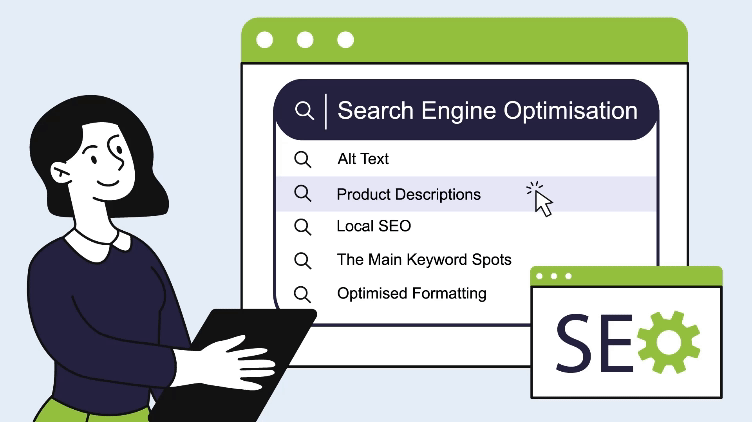
The 5 Vital Places You’re Forgetting SEO
SEO this, SEO that. These days, SEO is one of the main buzzwords that fills our LinkedIn and blog feeds. However, this is for good reason! Search engine optimisation isn’t dead, and you can use it to your advantage — if you know how to do it properly.
To help you get started, we’ve listed our top five SEO non-negotiables all digital marketers should know. Bookmark this page so you don’t lose them! Now, let’s learn the SEO essentials.
1. Alt Text
Remembering to optimise your alt text can improve your website’s SEO ranking by showing the search engine you’re offering considered and valuable content. They also show Google the page’s context and how to rank it.
But let’s step back for a moment. What is alt text?
Alt text (or alt tags) are short descriptions of images or videos for search engines and visually impaired users. When writing these captions, don’t keyword stuff them. Instead, provide genuine descriptions of the content for the best results.
2. Product Descriptions
Next up are SEO-optimised product descriptions. If you’re an e-commerce business, you must use your product descriptions to inform the reader and attract your target audience.
Descriptions should include relevant keywords, clearly describe your product or service, and be in the correct brand voice.
Again, don’t stuff these descriptions with keywords. Use a few that fit within the context. They need to give a professional and clear description of your product. Otherwise, your audience won’t understand what they’re purchasing.
3. Local SEO
Local SEO is all about improving your search visibility within your local community’s search results. Rather than focusing on high-volume keywords that are full of international competitors, you fill your strategy with locally relevant keywords.
For example, this could be for your local neighbourhood and surrounding area. There’s a lower search volume. However, people searching for local businesses are more likely to convert than people who are millions of miles away.
4. The Main Keyword Spots
Once you have your keywords, where do you put them? Don’t fall into the trap of spamming them throughout your content. There are three main places your keywords need to appear.
This includes:
- Your page’s title tag (or meta tag)
- The webpage URL
- Within the first 100 words of your content (usually introduction)
Once you’ve covered these spots, you can pepper more keywords into the content and add alt tags. However, you should always ensure the keywords are written naturally and not stuffed in for the sake of it.
Nothing ruins a user experience more than disjointed sentences and word soup!
5. Optimised Formatting
Finally, on-page SEO also includes how you format your written content. In addition to including the right keywords and valuable information, you want to make sure your writing is as digestible as possible.
The average attention span has shrunk from 12 seconds in 2002 to 8.25 seconds in 2015. This is a whopping 25% decrease. Your job is to keep the audience engaged.
Bullet points, clear headings, and short sentences are the best way forward. Cut the fluff and present the exciting information first.
Confused? Allow An SEO Expert To Help
When you’re running a business, networking with clients, and perfecting your products, the last thing you want to deal with is the minor details of SEO and digital marketing. And that’s where the experts come in.
At Re:View, we tackle the nitty-gritty search engine optimisation tasks so you can focus on what really matters. With packages to suit all needs and additional design and strategy options, we’re here to provide as much (or as little) assistance as you need.
Learn more about what we do now. Or get in touch with us today.







